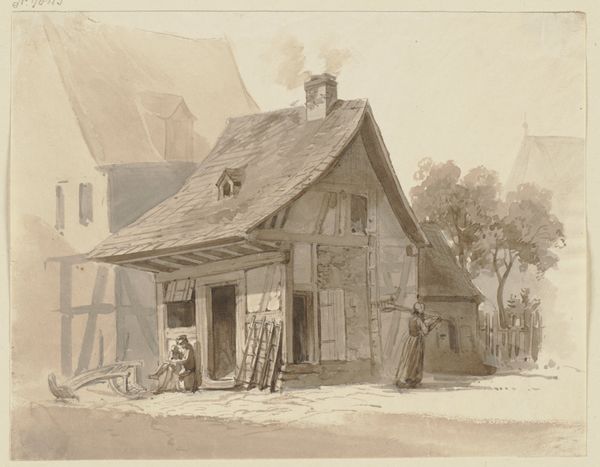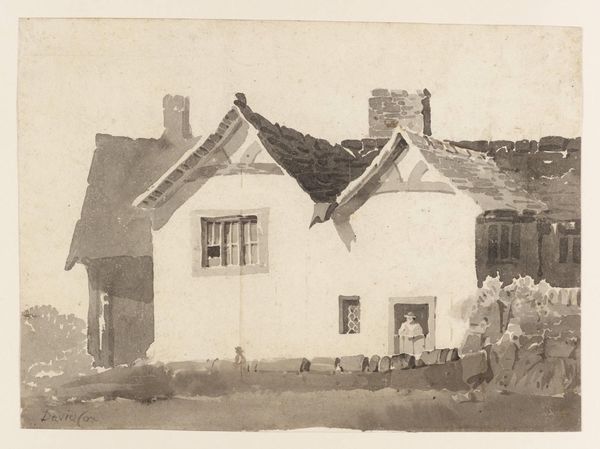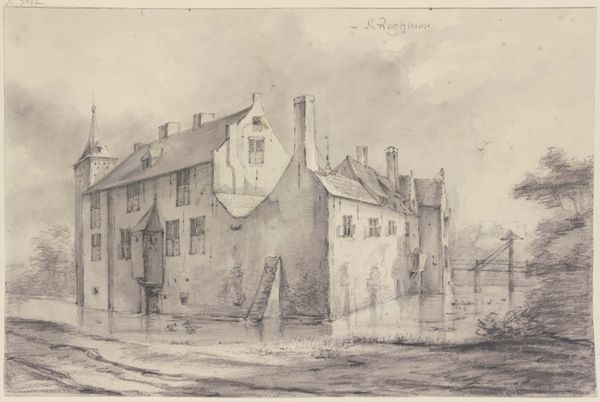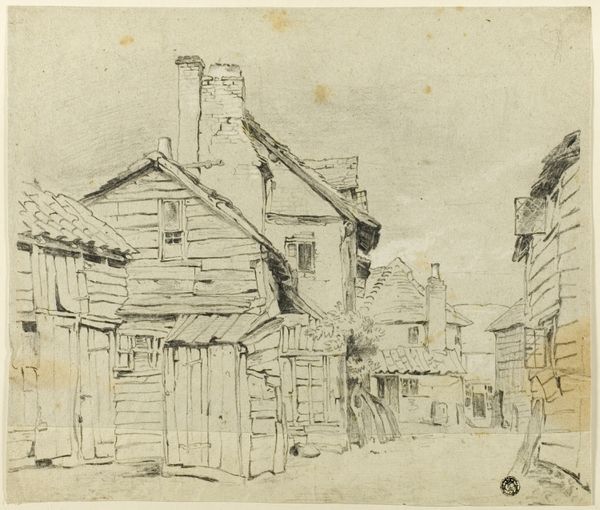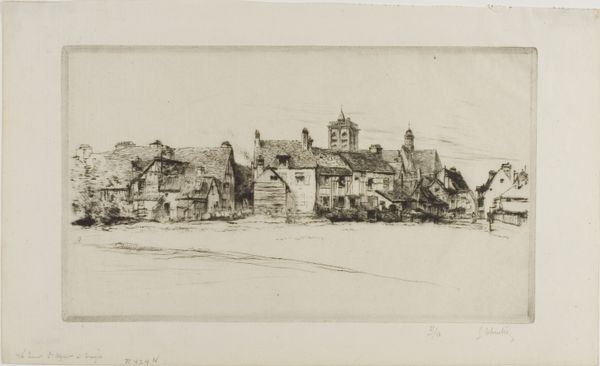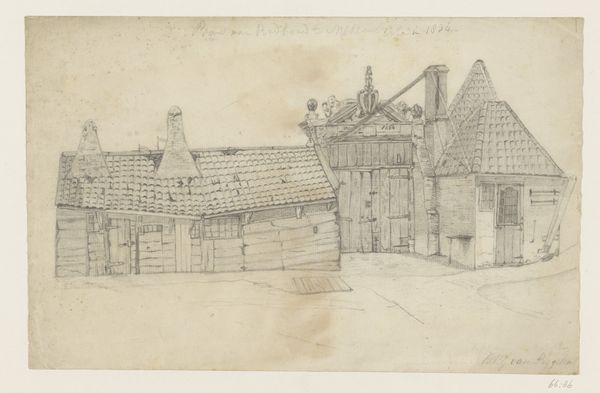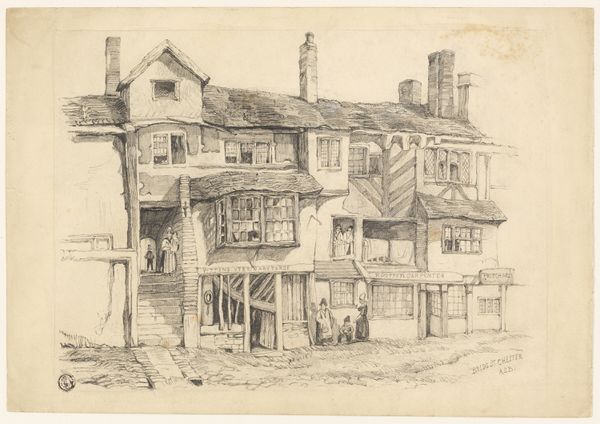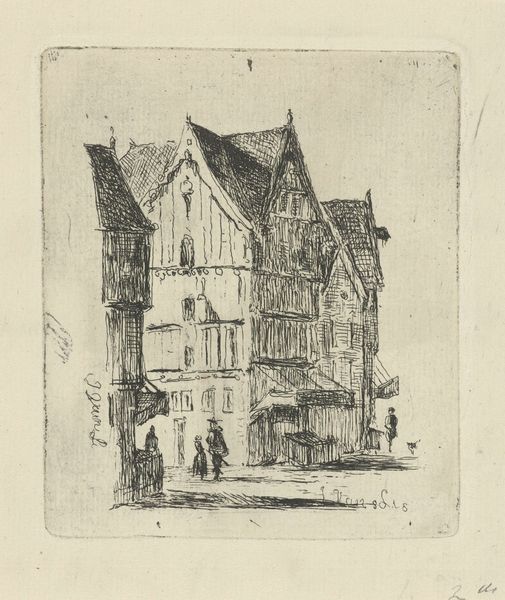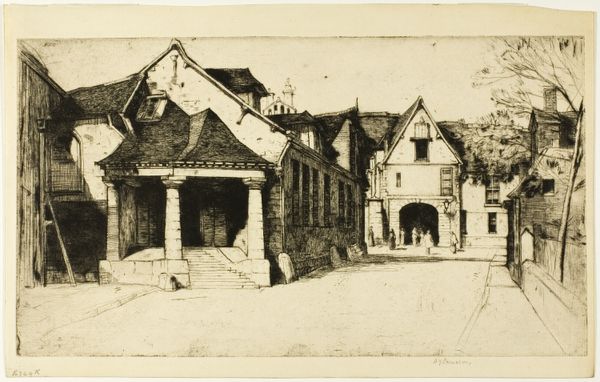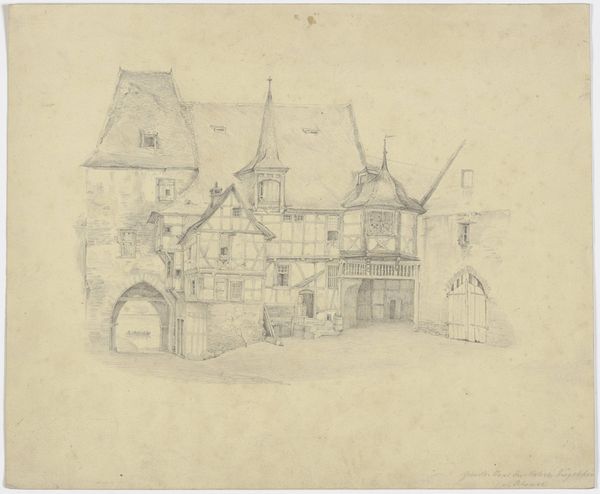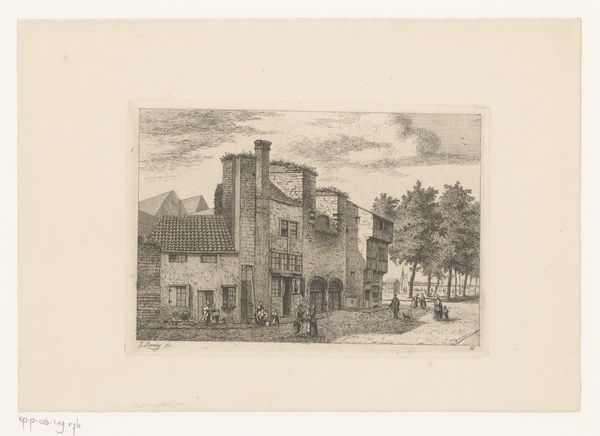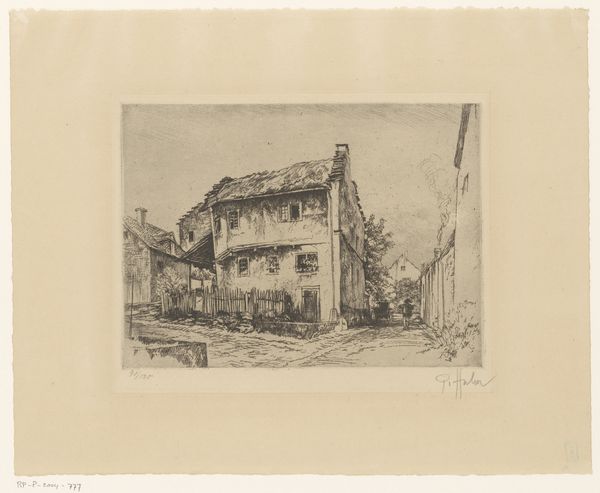
drawing, print, paper, ink, chalk
#
drawing
# print
#
landscape
#
paper
#
ink
#
romanticism
#
chalk
Dimensions: 186 × 271 mm
Copyright: Public Domain
Curator: Before us, we have "Darlington," a drawing crafted between 1805 and 1810, employing chalk, ink, and wash on paper. It’s held here at the Art Institute of Chicago and attributed to Henry Cave. What's your first reaction? Editor: Austere. The monochrome palette and the precision of the linework give it a distinctly structured feel, yet there's an undeniable simplicity. The play of light and shadow describes the volumes beautifully. Curator: Indeed. Cave's choice of medium, primarily ink and wash, really lends itself to a romantic representation of landscape, with particular detail in architectural renderings. It conjures the era of the Picturesque, where the ruin or old building spoke of time, history, and human experience. Notice the lines—how do they speak to you? Editor: Precisely. The drawing uses vertical and horizontal lines to render architectural details and guide your sight throughout the drawing. The structural clarity seems paramount, suggesting a very intellectual response to what could easily descend into pure sentimentality. And consider how these strong lines interact with the softer gradations achieved through the wash, juxtaposing precision and fluidity. Curator: And that juxtaposition mirrors the themes inherent in Romanticism. We find an appreciation for the rational order alongside an acknowledgement of emotional power, of nature, of the sublime—even here in the domestic. The image itself can remind of a distant past with a certain weight. Does it evokes particular feelings or associations in your experience? Editor: It speaks to a longing for clarity and order, something solid amidst change, although its lack of overt emotion can appear reserved to modern eyes. A bit cold perhaps? But this emotional restraint serves to further highlight the power of architectural representation. Curator: That restraint, I feel, could indicate something deeper. Remember, the early 19th century was a turbulent time in England. Such depictions could serve as both an embrace of history but also perhaps a form of escapism. In its representation of architecture, do you believe we witness something of cultural memory itself? Editor: Cultural memory perhaps mediated through formal order, expressed by the artist himself in relation to architectural elements. Interesting! Curator: Absolutely. The careful composition may serve as an anchor, allowing us to remember our shared heritage—especially the power that buildings have as cultural objects to hold meaning. Editor: Indeed, viewing it in this manner enriches its cultural dimension—especially through our present sensibilities. Curator: Precisely! These are fascinating points and a very revealing exchange around the image itself and its broader significance. Thank you! Editor: It's been enlightening.
Comments
No comments
Be the first to comment and join the conversation on the ultimate creative platform.
